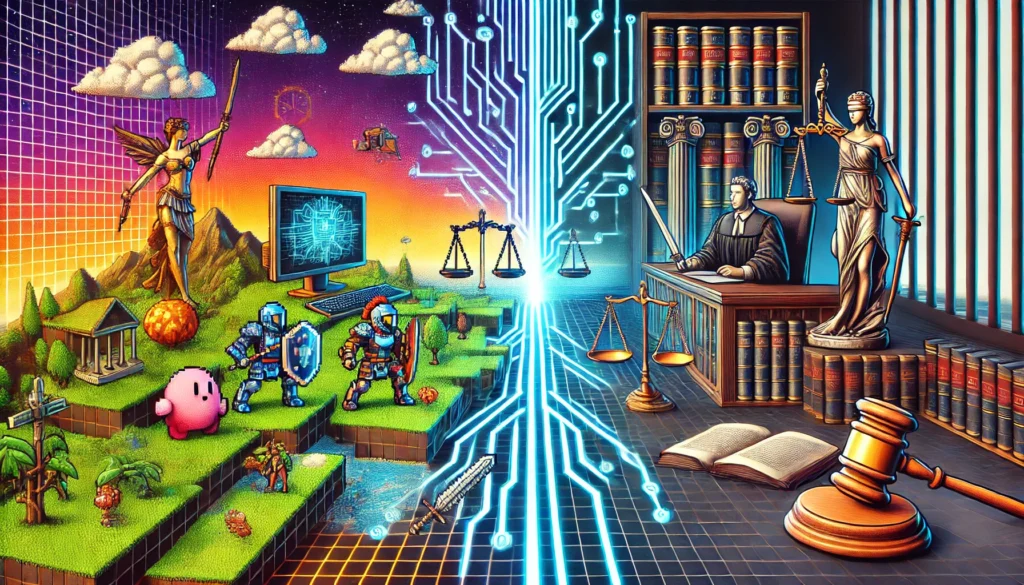Published On: November 2nd 2025
Authored By: Pranav Bhatt
Gujarat University
Abstract
The rise of digital technologies has revolutionized the collection and presentation of evidence in Indian courts. From emails and text messages to CCTV footage and social media records, electronic data has become central to both civil and criminal proceedings. However, the admissibility of such evidence raises complex legal questions, particularly under the Indian Evidence Act, 1872. The Supreme Court has delivered significant rulings—most notably in Anvar P.V. v. P.K. Basheer and Arjun Panditrao Khotkar v. Kailash Kushanrao Gorantyal—that have shaped the standards for authenticity and certification of electronic records. This article examines the statutory framework, judicial developments, and practical challenges in handling digital evidence, offering recommendations for strengthening India’s approach to cybercrime prosecutions.
Introduction
The exponential growth of digital technologies has transformed the nature of crime, investigation, and adjudication in India. With cybercrime incidents ranging from financial frauds and data breaches to cyber stalking and online defamation, the criminal justice system is increasingly dependent on electronic records as primary evidence. The legal system, however, faces challenges in balancing technological advancements with the principles of fairness, reliability, and authenticity.
The statutory framework for electronic evidence in India is primarily governed by the Indian Evidence Act, 1872, as amended by the Information Technology Act, 2000.¹ Sections 65A and 65B of the Evidence Act specifically address the admissibility of electronic records, making certification a mandatory precondition for their evidentiary value. Judicial interpretation has further clarified and, at times, complicated this requirement. The Supreme Court’s decisions in Anvar P.V. v. P.K. Basheer² and Arjun Panditrao Khotkar v. Kailash Kushanrao Gorantyal³ highlight both the progress and the persisting ambiguities in this field.
Against this backdrop, it is crucial to critically examine how Indian courts have approached electronic evidence, the practical challenges faced by investigators and litigants, and the potential reforms needed to ensure that justice keeps pace with digital realities.
Legislative Framework
The foundation of electronic evidence in India rests on the amendments introduced by the Information Technology Act, 2000, which inserted Sections 65A and 65B into the Indian Evidence Act, 1872.⁴ Section 65A provides that electronic records may be admitted in evidence in accordance with the provisions of Section 65B, while Section 65B sets out the conditions for admissibility. In essence, an electronic record is not considered admissible unless it is accompanied by a certificate identifying the device from which the record was produced, describing the manner of its production, and affirming the integrity of the process.⁵
The legislative intent was to address issues of authenticity and reliability by ensuring a clear chain of custody for digital material. Unlike traditional documents, electronic records can be easily altered, making safeguards indispensable. The statutory framework thus emphasizes certification and authenticity over mere possession of the record.
Additionally, the Information Technology Act, 2000, provides recognition to electronic records and digital signatures, placing them on par with paper-based records and handwritten signatures.⁶ This alignment was crucial in promoting e-governance, digital contracts, and online transactions, but it also carried implications for the criminal justice system, where electronic records quickly became indispensable in proving cybercrimes and related offenses.
While the legislative framework provides a foundation, its practical application has been fraught with interpretive challenges, as courts have struggled to balance rigid certification requirements with the realities of technological and investigative limitations. These issues have been most evident in the judicial interpretations that followed, particularly in landmark Supreme Court rulings.
Judicial Evolution / Case Law
The statutory framework of Sections 65A and 65B of the Indian Evidence Act has been the subject of considerable judicial scrutiny. Over the past decade, the Supreme Court has attempted to clarify the scope and application of these provisions, though not without creating phases of uncertainty.
The first major pronouncement came in Anvar P.V. v. P.K. Basheer, where the Court held that Sections 65A and 65B are a complete code for admissibility of electronic records.⁷ it ruled that oral evidence or secondary evidence cannot be used to prove electronic records unless the requirements of Section 65B are satisfied. This decision marked a significant departure from earlier approaches, reinforcing the need for strict compliance with certification.
However, the rigidity of this interpretation was soon questioned. In Shafhi Mohammad v. State of Himachal Pradesh, the Supreme Court relaxed the requirement of a Section 65B certificate, holding that parties who are not in possession of the device producing the electronic record cannot be expected to furnish such certification.⁸ The Court reasoned that in such situations, electronic evidence could still be admitted on the basis of other provisions of the Evidence Act. This judgment introduced a practical perspective but also created confusion, as it appeared to dilute the mandatory nature of Section 65B.
The controversy was eventually settled in Arjun Panditrao Khotkar v. Kailash Kushanrao Gorantyal.⁹ a three-judge bench reaffirmed the principles of Anvar P.V., holding that the certificate under Section 65B is indeed mandatory, except in cases where the original electronic device is produced in court. The Court clarified that the ruling in Shafhi Mohammad was incorrect and did not state the law properly. This decision restored certainty but also highlighted the persistent practical difficulties in procuring such certificates, particularly in criminal cases where evidence may come from third-party service providers like telecom companies or social media platforms.
Apart from these landmark cases, courts have also dealt with issues such as the admissibility of CCTV footage, call data records, and social media posts. High Courts have varied in their interpretations, sometimes emphasizing substance over form, but the general trajectory has leaned toward strict adherence to the statutory framework. The judiciary’s evolving stance demonstrates both an acknowledgment of the importance of digital evidence and the struggle to reconcile technological realities with procedural safeguards.
Overall, the judicial approach underscores the importance of authenticity and reliability in admitting electronic records, even if it comes at the cost of procedural rigidity. While this strengthens evidentiary integrity, it also places heavy burdens on investigators and litigants, raising questions about whether legislative reform may be needed to strike a better balance.
Practical Challenges
While the legislative framework and judicial pronouncements have attempted to create clarity, the admissibility of digital evidence in India continues to face serious practical hurdles.
- Certification Requirements:
The insistence on a Section 65B certificate poses significant challenges, especially in cases where the evidence originates from third-party service providers, such as internet companies, telecom operators, or foreign-based social media platforms. Investigators and litigants often lack the control or access necessary to obtain certification, leading to the exclusion of crucial evidence.¹⁰ - Chain of Custody:
Unlike traditional documents or physical exhibits, electronic records can be altered, deleted, or manipulated with relative ease. This makes chain of custody protocols vital. However, many law enforcement agencies lack standardized procedures or adequate training in digital forensics, resulting in gaps that compromise evidentiary value.¹¹ - Cross-Border Data Issues:
In cybercrime investigations, data frequently resides on servers located outside India. The process of obtaining such information through Mutual Legal Assistance Treaties (MLATs) is time-consuming and often ineffective. This delay undermines the timeliness of prosecutions and risks the loss of critical evidence. - Technological Complexity:
The rapid pace of technological change means that courts and law enforcement are often unequipped to deal with emerging forms of evidence, such as encrypted communications, block chain records, or data from Internet of Things (IoT) devices. Without technical expertise, courts may struggle to assess the reliability of such material. - Privacy and Fundamental Rights:
The use of electronic evidence also intersects with privacy rights under Article 21 of the Constitution. Following the recognition of privacy as a fundamental right in Justice K.S. Puttaswamy v. Union of India, courts must balance the need for effective investigation with the protection of individual liberties.¹²
Together, these challenges demonstrate that while the law has evolved, enforcement mechanisms and institutional capacity have not kept pace. Without systemic reforms, the evidentiary value of digital material may remain compromised in practice, regardless of statutory clarity.
Recommendations
The challenges surrounding electronic evidence in India highlight the need for systemic reform, both legislative and institutional. Several measures can be considered to strengthen the evidentiary regime and make it more compatible with the realities of cybercrime investigations.
- Statutory Clarification:
Parliament could amend Section 65B of the Indian Evidence Act to provide flexibility in cases where parties cannot reasonably obtain certificates from third-party service providers. Such a reform would align with international best practices, where courts are empowered to admit electronic evidence based on reliability rather than rigid procedural requirements.¹³ - Standardized Forensic Protocols:
Law enforcement agencies should adopt uniform digital forensic guidelines to preserve chain of custody and ensure the authenticity of electronic records. A centralized digital evidence repository, modeled on practices in other jurisdictions, could help minimize tampering and ensure consistent handling of sensitive material.¹⁴ - Capacity Building:
Judges, prosecutors, and police officers require specialized training in handling digital evidence. Establishing dedicated cybercrime units within investigative agencies and providing courts with technical experts would ensure that complex forms of evidence—such as encrypted data or block chain records—are evaluated correctly. - International Cooperation:
Given the transnational nature of cybercrime, India must strengthen its mutual legal assistance framework and actively participate in international conventions on cybercrime. Faster mechanisms for obtaining foreign-based electronic evidence are essential to prevent delays that undermine prosecution.
By implementing these reforms, India can develop a more balanced framework that safeguards authenticity while avoiding procedural rigidity, ensuring that justice is not compromised in the digital era.
Conclusion
The increasing dependence on digital evidence in Indian courts reflects the broader transformation of society into a technology-driven space. While the statutory framework under the Evidence Act and judicial rulings such as Arjun Panditrao have clarified the law, practical barriers continue to limit effective enforcement. The dual challenge lies in preserving the integrity of electronic records while ensuring that procedural rigidity does not deny justice. Comparative practices show that reliability, not formalism, should guide admissibility.¹⁵ by adopting targeted reforms, strengthening institutional capacity, and enhancing international cooperation, India can move toward a robust evidentiary framework that supports both fairness and efficiency in the digital age.
References
- The Indian Evidence Act, No. 1 of 1872, §§ 65A–65B (India).
- Anvar P.V. v. P.K. Basheer, (2014) 10 SCC 473 (India).
- Arjun Panditrao Khotkar v. Kailash Kushanrao Gorantyal, (2020) 7 SCC 1 (India).
- The Indian Evidence Act, No. 1 of 1872, § 65A (India).
- Id. § 65B.
- The Information Technology Act, No. 21 of 2000, §§ 4–5 (India).
- Anvar P.V. v. P.K. Basheer, (2014) 10 SCC 473 (India).
- Shafhi Mohammad v. State of Himachal Pradesh, (2018) 2 SCC 801 (India).
- Arjun Panditrao Khotkar v. Kailash Kushanrao Gorantyal, (2020) 7 SCC 1 (India).
- See Arjun Panditrao Khotkar v. Kailash Kushanrao Gorantyal, (2020) 7 SCC 1 (India).
- Ritu Kumar, Digital Forensics and Indian Criminal Justice System: Challenges and Prospects, 59 JILI 211, 214–16 (2017).
- Justice K.S. Puttaswamy v. Union of India, (2017) 10 SCC 1 (India).
- Law Commission of India, Report No. 185: Review of the Indian Evidence Act, 1872, at 102–05 (2003).
- Ministry of Home Affairs, Standard Operating Procedures for Digital Evidence Handling (Gov’t of India, 2021).
- Stephen Mason & Daniel Seng, Electronic Evidence 9–12 (5th ed. 2021).




